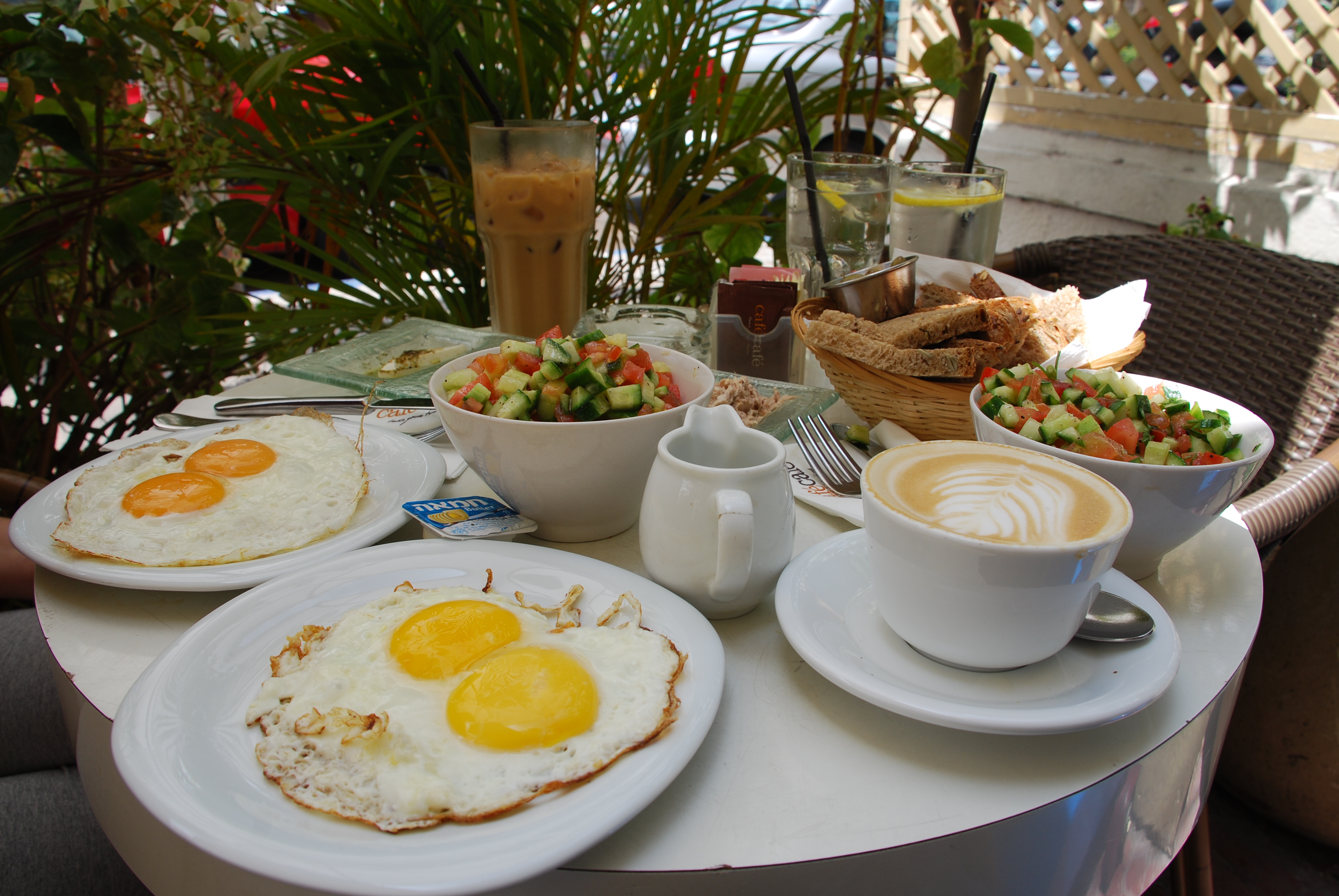|
Masabacha
Msabbaha ( ar, مسبحة, musabbaḥa, also romanized musabbaha, literally "swimming" also known as mashausha or mashawsha ( ar, مشوشة) is a variation of hummus popular in the Levant. Ingredients The main difference between msabbaha and hummus is the texture. In contrast with hummus, the chickpeas here remain whole. It sometimes contains hard-boiled egg, and like hummus, it is typically eaten with fresh pita bread. The base of the dish is ''balila'': warm cooked chickpeas in their own soak-water with a little added cumin, chopped parsley and lemon or lime juice. Pine nuts fried in olive oil or ''samneh'' (clarified butter) are sometimes poured over the ''balila''. Other ingredients include tahini and minced garlic. A variation of ''msabbaha'' common in Damascus serves chickpeas and tahini Tahini () or tahina (, ) is a Middle Eastern condiment made from toasted ground hulled sesame. It is served by itself (as a dip) or as a major ingredient in hummus, baba ghanoush ... [...More Info...] [...Related Items...] OR: [Wikipedia] [Google] [Baidu] |
Levant
The Levant () is an approximate historical geographical term referring to a large area in the Eastern Mediterranean region of Western Asia. In its narrowest sense, which is in use today in archaeology and other cultural contexts, it is equivalent to a stretch of land bordering the Mediterranean in South-western Asia,Gasiorowski, Mark (2016). ''The Government and Politics of the Middle East and North Africa''. }, ), meaning "the eastern place, where the Sun rises". In the 13th and 14th centuries, the term ''levante'' was used for Italian maritime commerce in the Eastern Mediterranean, including Greece, Anatolia, Syria-Palestine, and Egypt, that is, the lands east of Venice. Eventually the term was restricted to the Muslim countries of Syria-Palestine and Egypt. In 1581, England set up the Levant Company to monopolize commerce with the Ottoman Empire. The name ''Levant States'' was used to refer to the French mandate over Syria and Lebanon after World War I. This is probab ... [...More Info...] [...Related Items...] OR: [Wikipedia] [Google] [Baidu] |
Haaretz
''Haaretz'' ( , originally ''Ḥadshot Haaretz'' – , ) is an Israeli newspaper. It was founded in 1918, making it the longest running newspaper currently in print in Israel, and is now published in both Hebrew and English in the Berliner format. The English edition is published and sold together with the ''International New York Times''. Both Hebrew and English editions can be read on the internet. In North America, it is published as a weekly newspaper, combining articles from the Friday edition with a roundup from the rest of the week. It is considered Israel's newspaper of record. It is known for its left-wing and liberal stances on domestic and foreign issues. As of 2022, ''Haaretz'' has the third-largest circulation in Israel. It is widely read by international observers, especially in its English edition, and discussed in the international press. According to the Center for Research Libraries, among Israel's daily newspapers, "''Haaretz'' is considered the most infl ... [...More Info...] [...Related Items...] OR: [Wikipedia] [Google] [Baidu] |
Levantine Cuisine
Levantine cuisine is the traditional cuisine of the Levant. Perhaps the most distinctive aspect of Levantine cuisine is ''meze'' including ''tabbouleh'', ''hummus'' and ''baba ghanoush''. Levantine dishes * Arabic coffee (قهوة عربية)—made from finely ground coffee beans with cardamom * ''Awameh'' (عوامة)—a fried-dough Levantine pastry similar to doughnut holes, made of deep-fried dough soaked in sugar syrup or honey and cinnamon, sometimes sprinkled with sesame seeds * ''Baba ghanoush'' (بابا غنوج)—a dip made from baked, mashed eggplant mixed with lemon, garlic, olive oil and various seasonings * ''Baklava'' (البقلاوة)—a dessert made of phyllo pastry filled with chopped nuts and soaked in syrup * ''Bamia'' (بامية)—a stew prepared with chunks of lamb meat with okra in a tomato-based sauce, served over rice * ''Basbousa'' (بسبوسة)—a Middle-Eastern small, sweet cake of cooked semolina soaked in rose water syrup, topped w ... [...More Info...] [...Related Items...] OR: [Wikipedia] [Google] [Baidu] |
Israeli Cuisine
Israeli cuisine ( he, המטבח הישראלי ''ha-mitbaḥ ha-yisra’eli'') comprises both local dishes and dishes brought to Israel by Jews from the Diaspora. Since before the establishment of the State of Israel in 1948, and particularly since the late 1970s, an Israeli Jewish fusion cuisine has developed.Gold, Rozann''A Region's Tastes Commingle in Israel''(July 20, 1994) in ''The New York Times'' Retrieved 2010–02–14 Israeli cuisine has adopted, and continues to adapt, elements of various styles of Arab cuisine and diaspora Jewish cuisine, particularly the Mizrahi, Sephardic and Ashkenazi styles of cooking. It incorporates many foods traditionally included in other Middle Eastern and Mediterranean cuisines, so that spices like '' za'atar'' and foods such as ''falafel'', ''hummus'', ''msabbha'', ''shakshouka'' and '' couscous'' are now widely popular in Israel.Gur, ''The Book of New Israeli Food'', pg. 11 Other influences on the cuisine are the availability of ... [...More Info...] [...Related Items...] OR: [Wikipedia] [Google] [Baidu] |
.png)
_DAILY_OF_THE_EARLY_20S.jpg)

